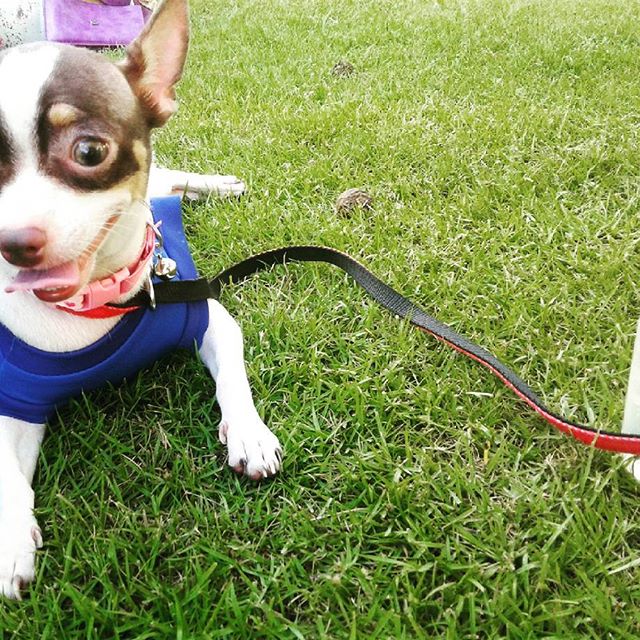BIMO: Mixed Breed
Responsible Pet Parent: Hannah Remate
This is my most handsome baby, cutiepatootie, blacky, fierce, first love doggie:) My stress Reliever. Made me braver and responsible. I Love Him so much

This is my most handsome baby, cutiepatootie, blacky, fierce, first love doggie:) My stress Reliever. Made me braver and responsible. I Love Him so much

Her name is Dophia Marie, she love’s peanut butter sandwich. She love to play around with her favorite toy toothless. She really change our life in so many different ways. I personally attached to her the first time I saw her, I have this certain feeling that she’ll help me overcome my mood swings



Is that my food already?
Meet Mochee
owned by Jhoan Rojales
Like to Say Hi to Our Featured Pets & Owners of the Week!
Do you have a cute picture of your pet? Comment your photos on our Facebook Page and get featured on our page!
From your favorite pet hospital, Makati Dog and Cat Hospital

Do you think that when you see a dog is wagging its tail it is always friendly? Think again.
A dog’s tail is used for balance especially making turns while running or swimming. The tail is also used to balance the dog while climbing, leaping and walking through narrow structure.
As dogs cannot talk, they use their bodies to communicate and that includes their tails.
So here are the basics in the position of your dog’s tail:
Natural position
Now you should be aware the natural position of your dog’s tail. Some dogs have tails naturally curl up above their backs. Other dogs have tails that hang down behind their legs. So if your pet’s tail is in its natural position, then your dog is happy.
The Tail Is Up
When your dog’s tail is higher than normal, it is giving a signal that is is dominant. Unmoving tail held in high stiffness is communicating tension or hostility. Never go near a dog when you see the tail in this position.
The Tail Is Down
A dog’s tail that is down means submission or nervousness. More so if it hides the tail in between the legs.
A Tail Moving Side-To-Side
If a dog moves the tail side to side, observe where the tail is moving strongly. Tails moving more to the dog’s right means positive emotions – can be excitement or friendly curiosity. Tails moving more to the dog’s left is showing negative emotions – anxiety or aggression.
This is because the left side of the brain in humans and dogs alike deals with the positive behavior while the right side deals with negative behavior. And as the brain controls opposite sides of the body, the exhibition is opposite.
Right brain, negative behavior, tail moving more to the left. Left brain, positive behavior, tail wagging more to the right.
Wagging Speed Is Also Key
You also have to see how fast the tail wagging is. If the tail is down and wagging fast to the right, the dog is submitting to you. When you see the dog is wagging its tail and also including its body, then the dog is very happy to see you.
If the tail is up and wagging fast to the left, avoid the dog.
A dog slowly wagging its tail no matter the position – up or down – shows a calm dog. This dog is also curious about you and wants to know you better.
Learn more about dog behavior at Makati Dog and Cat Hospital
Sources:
https://www.cesarsway.com/dog-behavior/innocuous-behaviors/Why-does-my-dog-wag-its-tail
http://www.petmd.com/dog/behavior/why-do-dogs-wag-their-tails
http://www.livescience.com/45196-why-do-dogs-wag-their-tails.html
http://www.animalplanet.com/pets/why-do-dogs-wag-their-tails/

Heartworm is a disease that you would not want your pet to have. It is a serious disease that can affect your dog and is potentially fatal.
As the name suggests, heartworm is called such because it lives in the heart of the dog. Other than the heart, it also goes to the the lungs and associated blood vessels. Heartworms are foot long worms that causes heart failure and lung disease that leads to organ failure in the dog’s body.
Although there are other animals that are affected by heartworms, dogs are natural hosts for them. This means that heartworms can mature to adulthood inside the dog undetected.
How is heartworm transmitted to your dog?
The culprit of heartworm disease is no other than the lowly mosquito. When a mosquito bites an infected animal with heartworm, the blood taken is with baby worms called microflaria.
Stages of Heartworms
There are 5 larva stages of the heartworms (L1 to L5). The baby worms go through L1 to L3 while inside the mosquito.
L3 larva is ready to infect other animals. It is in L3 stage that these larvae go into a dog’s bloodstream when bitten by an infected mosquito.
In the dog’s bloodstream, the L3 larva develops into L4 in as early as 2 to 5 days after infection. From L4, it takes around 2 months to be an L5 larva.
At this stage, the larvae has entered adulthood. At about 90 days inside the bloodstream, they have reached the heart and stays there. From the heart, they grow rapidly in length and size. Heartworms can live from 5 to 7 years.
Heartworm Symptoms in Dogs
In the early stage of heartworm infection, dogs will show no sign of it. Even a blood test will not detect these heartworms initially.
Symptoms will only show when the L5 larvae has arrived in the heart and surrounding blood vessels.
Some of these signs include mild persistent cough, fatigue after some mild activity, loss of appetite and weight loss. Heartworms blocks the blood vessels and can threaten the life of your dog.
Treatment for heartworm disease can take a toll on your dog not to mention your finances. Especially when the heartworms have penetrated the heart, lungs and blood vessels of your pet.
The best way to avoid heartworm disease is getting the heartworm preventatives. It is recommended that your puppy start this at 8 weeks of age. At 7 months, their blood should be tested for heartworm. Then annual tests is recommended as per veterinarian’s advice.
Learn More About Heartworm at Makati Dog and Cat Hospital
Sources:
http://www.petmd.com/dog/general-health/evr_dg_heartworm_disease#
https://www.heartwormsociety.org/pet-owner-resources/heartworm-basics
